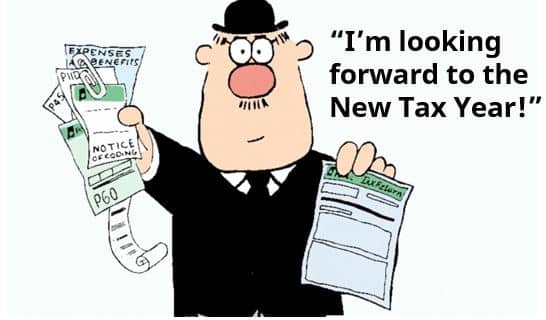Well you can blame the Romans, especially Julius Caesar and Europe.
Back in 1582 the Pope Gregory X111 commanded the change from the Julian calendar as there was a problem. It ran for 30 or 31 days for 11 months and it was only February that had 28 days (29 every 4 years). By the 1500s it was 10 days behind the solar calendar.
Britain decided that it wanted to be different to the rest of Europe (a bit like post Brexit) and it didn’t adopt the instructions by the Pope. Britain then continued its 10 day difference with the rest of Europe.
By 1752 the difference went up to 11 days, due to a leap year in one calendar and not the other. In the spirit of future, unthought of, energy savings measures, the British moved across to the solar powered Gregorian Calendar and removed the 11 days.
In 1752 the tax year started on 25 March, old Tax New Year Day in Great Britain. The Treasury concluded to guarantee no loss of tax revenue, the tax year starting on 25 March 1752 would be 365 days ending on 4 April and so the new year started on 5 April.
However, the Treasury moved the year start again from the 5 April to 6 April in 1800 due to the Gregorian Calendar not having a leap year whereas the old Julian would. The 6 April has remained the start of the tax year since.
Related Content
A guide to inheritance tax planning
What is inheritance tax? Inheritance tax is a levy imposed on the estate of a deceased person before the assets are distributed to their heirs. It is calculated based on the value of a person’s estate (the assets they own as an individual). Above a certain threshold....
Abolition of Furnished Holiday Let Regime
If you own furnished holiday home, you may need to take action before 5 April 2025 due a recent Budget announcement. Capital gains tax on residential property In the Spring Budget, it was announced that the top capital gains tax rate on the sale of residential...
Avoid the £10 Daily Penalty for Self-Assessment
£10 daily penalty for Self-Assessment starts on 1st May Starting from 1st May 2024, individuals who have yet to submit their overdue Self-Assessment tax return for the 2022-23 tax year will incur additional late filing penalties of £10 per day (capped at a total of...





